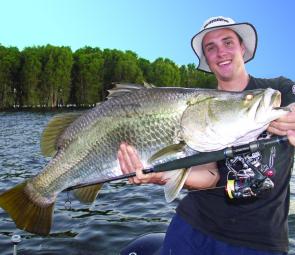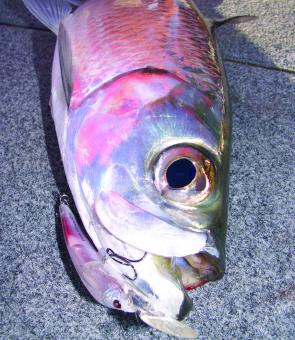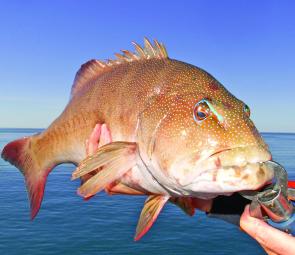If we had to choose the month that produces the best fishing in the Whitsundays, it would most likely be October.
There should be a lot of different fish species worth targeting in the saltwater, from the estuaries and rivers to the inshore and outer islands.
Bream, flathead, mangrove jack, fingermark, salmon and barramundi are all great fish species that can show up around October in the saltwater estuaries and rivers.
Live or fresh dead baits are probably the most productive way of catching these October species, but lure fishing can also be an effective option once you know more about the fish you’re targeting.
Each fish is different – they have different ways of feeding, they hang in different areas of the estuary at different depths and feed on different baits. Knowing about each species helps you understand where to fish and what lures or baits to use.
Most estuary fish like structure or cover – structure is a natural or man-made feature, such as a rock ledge, and cover is an object like a fallen tree in the water. Often when structure and cover is combined, a hotspot is created for fish such as bream, flathead, mangrove jack and barramundi.
Some current flow at the spot is also important as it carries food to the fish. If you fish around these spots, you’ll catch more fish.
Coral trout, sweetlip and emperor are common catches when fishing deep and shallow reef structure in the Whitsundays. These fish can be found around shallow and deep reefs and will eat a range of different bait and lures.
A good way to catch them is to use berley made up of pilchards to bring the fish to you. Using berley is a good option when there is some current as the moving water carries the scent and the fish follow the trail up to the source.
Berley can attract a range of fish like reef species as well as queenfish, tuna and mackerel.
Giant trevally will also be a great option around the islands fringing coral structure.
Target GT by casting large surface lures such as poppers and floating stickbait lures. You will also need a heavy rod and reel and at least 80lb braided line and 100lb leader to land these fish.
A good technique is to cast the lure out over shallow reef bommies, drop-offs and rocky points and bring it back out into the deep with a noisy retrieve. Keep trying these types of spots and you’ll eventually come across a big GT or two.
Peter Faust Dam is another great addition to the range of fishing options available in the Whitsundays.
October is usually a great month to fish this impoundment as the water temperatures will be warming up nicely and the fish should be feeding more consistently throughout the day and night.
The barramundi at the lake average about 80-90cm. There are also larger barramundi between 115-120cm around in good numbers, but these fish are a rarer catch.
Casting and trolling lures will be productive this month and fishing at night will also improve. The fish will start to feed and become more active after dark with the warmer water.
Kayak fishing is good option at Peter Faust Dam and is becoming increasingly popular. The range of pedal-driven, Hobie Kayaks are perfect for stealthily moving around, casting or trolling.
The Mirage Drive pedal power system allows you to move the kayak much easier and faster than with a paddle and also keeps your hands free to cast or work the rod while trolling.
These Hobie Kayaks come in a range of different models for fishing with both single and twin seaters available. The Pro Angler is probably the best single seater option and is amazingly well designed with rod holders, tackle storage cabinets and is even stable enough to stand up and fish from.
Reads: 3580
October is often an excellent month for targeting impoundment barra at Peter Faust Dam.

A tarpon caught by retrieving a Sebile Koolie Minnow over a deep ledge.

All types of reef fish will be biting in October, as well as coral trout around the shallow and deep reef structures.

Barramundi should be biting well at Peter Faust Dam – this 110cm was caught casting in a shallow bay filled with weed.




